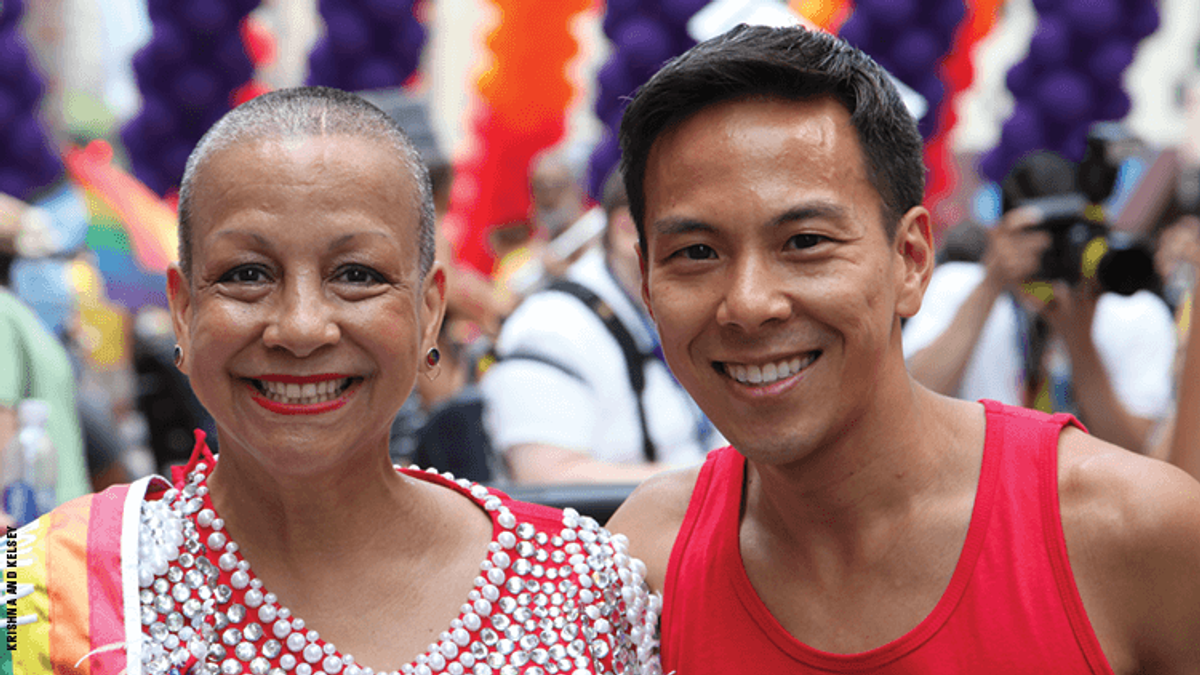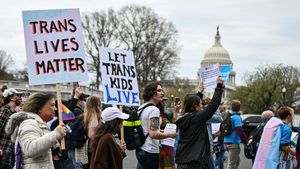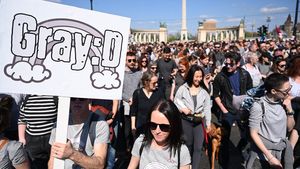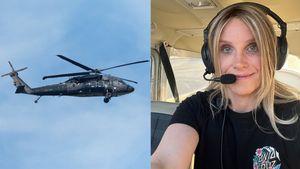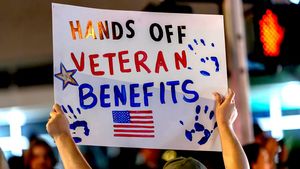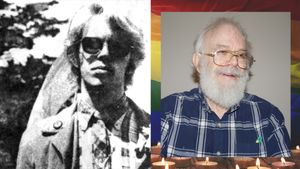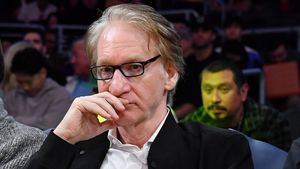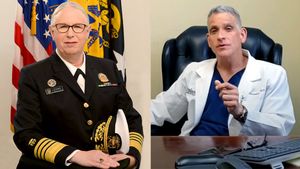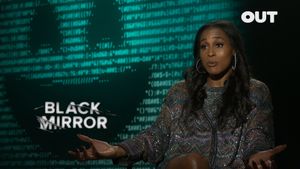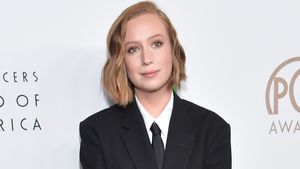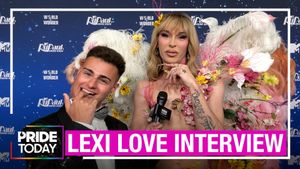Forty years ago, an unnamed illness began to disproportionately impact members of the LGBTQ+ community, specifically gay and bisexual men.
The disease, which later became known as AIDS, caused by a virus dubbed HIV, devastated our community, becoming the leading cause of death for men between 25 and 44 in 1992. During the 1980s and early 1990s, those diagnosed were largely ignored by the medical and political establishments and were often shunned by family, employers, and health care providers. Despite the lack of support from our government, our organizations rose to meet the needs of our brothers and sisters who desperately needed support.
Before there was a name for HIV or government money to research it, Gay Men's Health Crisis became the first to mobilize a community and provide treatment, care, and prevention education. From the beginning, GMHC knew HIV was not just a medical issue but that it had psychological and social implications as well. At the height of the epidemic, GMHC served one in four New Yorkers living with HIV. This year, 40 years after the first confirmed case of the disease in the United States, it continues the fight as one of the leading organizations dedicated to end the epidemic in our lifetime -- but the journey wasn't easy.

Out spoke with Kelsey Louie, GMHC's former CEO (above right), who recently stepped down after a seven-year tenure with the org, and Krishna Stone (above left), a revered HIV activist and GMHC's director of community relations who is featured in NYC Pride's 2021 visual campaign, to discuss the 40th year of the HIV epidemic, Pride, and their hopes for a post-pandemic world.
Out: It's hard to believe that this June marks the 40th year of the HIV and AIDS epidemic. Tell me more about the evolution of GMHC and how the agency has evolved.
Kelsey Louie: Throughout the 1980s and much of the '90s, the disease devastated the city's gay, bisexual, and trans communities. In addition to a hotline where people could obtain accurate information about HIV, GMHC launched the nation's first peer support program for people living with HIV/AIDS called the Buddy Program. Volunteers, many living with HIV themselves, helped clients with everyday tasks such as shopping, laundry, dog walking, as well as providing companionship. Buddies also acted as intermediaries when people living with HIV or AIDS were turned away from hospitals or refused services from other agencies. The Buddy Program set the stage for GMHC to implement an array of psychosocial and advocacy services for their clients, including financial, legal, counseling, and home care. GMHC's comprehensive approach endures today and includes prevention, care, advocacy, and research. Our model has helped inform the design of other HIV/AIDS service programs around the world. The agency's contributions have helped reduce the number of new [HIV diagnoses] in New York City to below 2,000 in 2019 for the first time in decades. While HIV continues to disproportionately affect the LGBTQ+ community, the epidemic is now concentrated in Black, brown, and low-income communities. In addition, people ages 50 years and older now account for the largest demographic of people living with HIV. By 2025, they are expected to account for 60 percent. Our programs will continue to evolve to meet the needs of this community and also those who continued to be affected by HIV.
Krishna Stone: I remember in the mid-1980s to the mid-1990s, there were so many people dying and too many memorial services to attend.
When I was hired at GMHC to work in the volunteer department, one of my first tasks was to recruit more volunteers for the Buddy Program. Our clients were so isolated then because their families and friends were abandoning them. We also received requests for Buddies from clients in the Bronx, Brooklyn, Queens, and Staten Island. It was challenging to recruit volunteers who were willing to go to the boroughs outside of Manhattan. The Buddy Program continues to help our clients to break the isolation that people living with HIV still feel, especially older clients who experience stigma, discrimination, and loneliness.
This year's Pride is particularly meaningful given the year we've had. What does Pride mean to you?
KL: Pride is immensely important to raise awareness about HIV and the services that GMHC provides. While we have much to celebrate with the continual decline in new [infections], the epidemic is not over. Our participation in Pride also provides an opportunity to connect people with our prevention programs. Each year when the event can be held in person, we offer free HIV testing and distribute prevention education materials and information about our services. In addition to the Manhattan Pride events, we participate in many of the Pride events in the five boroughs. It also serves as a time to celebrate being LGB and T as well as all of the progress we have made, and to remember and honor the pioneers, activists, and brave people who have made having LGBTQ+ Pride possible.
KS: Each year I coordinate GMHC's participation in the annual Pride events, including parades and a march, rallies, festivals, and more. I have also volunteered as one of the announcers along the route of the NYC Pride March for over 20 years, sending out unconditional love to hundreds of thousands of people each year. In 2017, I had the extraordinary honor of being one of four grand marshals for the NYC Pride March. Yes, I am royalty! I also represent GMHC in the annual Pride parades and festivals in the boroughs outside of Manhattan.

What are you hopeful for this year?
KL: I'm hopeful that we can reopen our facility sometime later this year and resume in-person services. I am proud that our staff has been able to continue meeting the needs of our clients during the pandemic. While we're staying connected to our clients through weekly wellness checks, we know the sense of community that characterizes GMHC has been diminished due to the lack of in-person interactions during the pandemic. I'm also hopeful that the new Biden-Harris administration will continue to restore the values of compassion, tolerance, and social justice while refocusing attention and resources on what it will take to end the AIDS epidemic. Their leadership will hopefully help all of us heal from the deep wounds created by the previous administration, and we will see an end to the violence against Black people, Asians, and other groups.
KS: I very much look forward to returning to our offices and inviting press and donors to come and learn more about our services as well as hosting visits from people all over the world who want to learn what we do. I also look forward to continuing my work helping to plan community events outdoors and at other venues, particularly for World AIDS Day. I miss the live candlelight vigils, gatherings, and rallies. I also look forward to volunteering again with other community-based organizations such as NYC Pride.
Do you think society's growing inclusiveness has changed the significance of Pride? Are straight-queer alliances still relevant?
KL: Partnerships are essential to our work to end the HIV epidemic and advance the rights of LGBTQ+ and underserved communities. No movement has ever been successful without the support of allies. We need the support and participation of people of all sexual and gender identities to accomplish these goals. Two of our most generous donors were straight women -- Judith Peabody and Joan Tisch -- who also volunteered to visit people dying of AIDS and helped out in our offices. We won't forget their generosity along with others who have passed and those who continue to support our work.
KS: As a Black woman and mother who is a straight ally to the LGBTQ+ community, I appreciate the importance of straight people being a part of the solutions to overcoming homophobia, transphobia, racism, and other social injustices. I think it is critical to foster discussions with the straight community about these issues. Being an ally, supporter, or activist comes in many different forms.
What will it take to end the AIDS epidemic in our lifetimes?
KL: We must recommit ourselves to what it will take to accomplish that goal, from prevention to care to advocacy. We all have a role in this fight whether taking steps to [prevent new HIV diagnoses], fighting stigma against people living with HIV, or supporting organizations like GMHC working to ensure all people living with HIV have access to the services they need for healthy lives. We have had the data and we have had the science. We need the will of the government, and that often translates to dollars.
KS: There is still work to be done that will allow our country to move forward in healing from the tragedies of 2020. We also continue to reel from the decades-long loss and suffering created by the HIV epidemic. We all must embrace our collective responsibility to end the epidemic. This work has to include partnerships with other organizations both in the public health and social justice spaces. I remain committed with Kelsey to achieving this goal.
This story is part of Out's 2021 Pride Issue, which is on newsstands now! To get your own copy directly, support queer media and subscribe -- or download yours for Amazon, Kindle, Nook, or Apple News.
